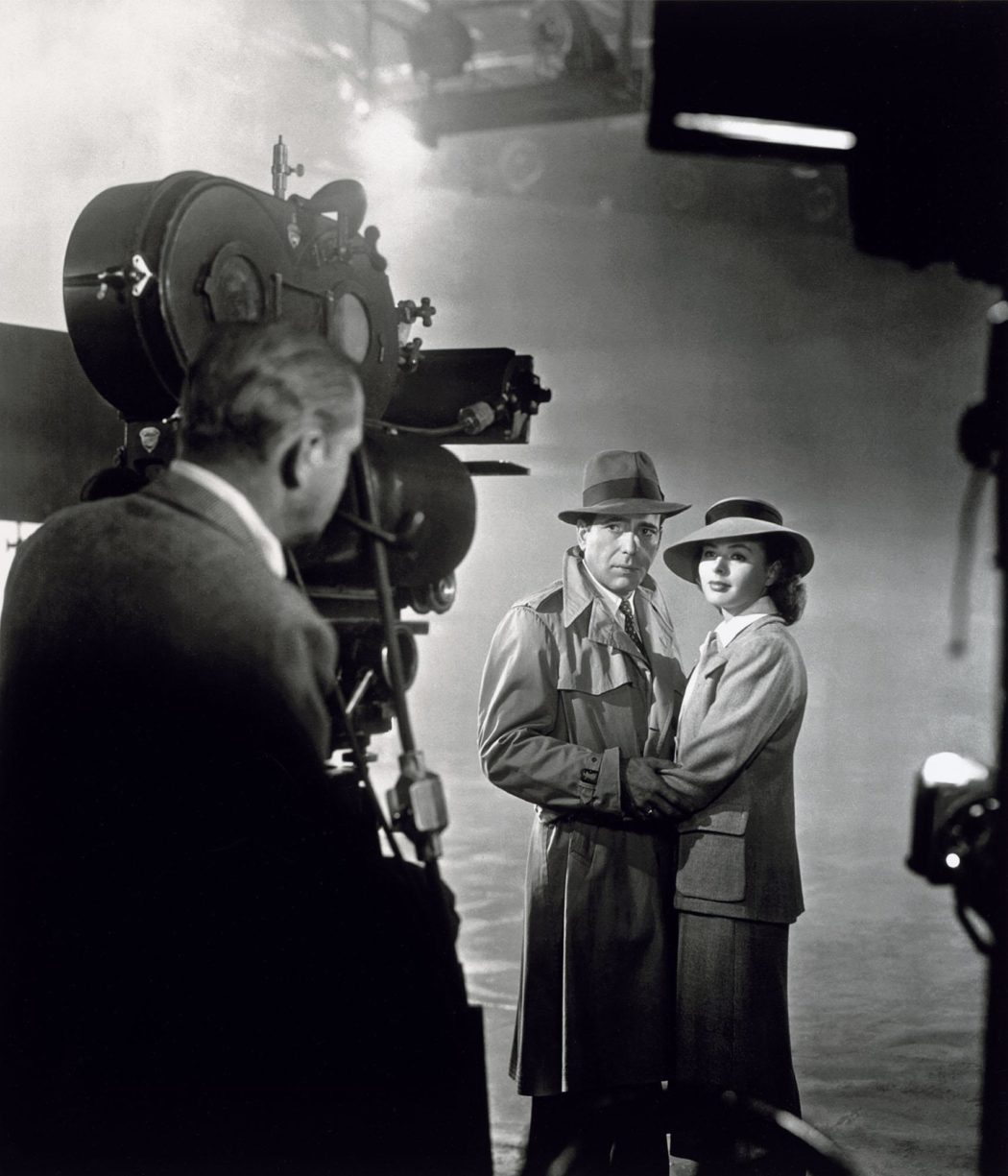Why do actors talk so fast in Old movies?
The Rapid-Fire Dialogue of Classic Cinema Explained
(By Ray Reese)

The Influence of Stage Acting and Vaudeville
One major reason why actors spoke so quickly in old movies stems from their theatrical roots. Many early film stars came from the stage and vaudeville, where projection, energy, and timing were essential to captivate a live audience.
Actors like James Cagney, known for his rapid delivery in films like Angels with Dirty Faces (1938), developed their quick-talking style on stage. Vaudeville routines often required performers to cram jokes and lines into tight time slots, conditioning them to deliver rapid-fire dialogue.
The Studio System and Snappy Screenwriting
During Hollywood’s Golden Age, especially in the 1930s and 1940s, studios like Warner Bros. favored snappy, fast-paced dialogue that reflected the urgency and hustle of the era. Screenwriters were encouraged to keep scenes brisk to fit within time constraints and appeal to audiences used to quick entertainment.
For instance, in His Girl Friday (1940), Rosalind Russell and Cary Grant engage in lightning-fast banter, exchanging over 240 words per minute in some scenes. The script was specifically tailored for rapid delivery to heighten tension and energy.
Cultural Attitudes and the Great Depression
Speedy dialogue also reflected cultural and economic factors. In the 1930s and 1940s, during the Great Depression and World War II, movies served as an escape. Fast-talking characters symbolized wit, resilience, and efficiency—traits admired during hard times.
Characters like newspaper reporters, gangsters, and detectives, such as Humphrey Bogart in The Maltese Falcon (1941), exuded cool confidence with clipped, rapid responses. These roles mirrored the fast-paced, no-nonsense reality of urban life and appealed to audiences craving sharp minds and action.
Technical Limitations and Dialogue Overlapping
Sound technology in early talkies also played a role. With rudimentary microphones and editing tools, actors often had to speak loudly and quickly to ensure lines were captured clearly. Directors like Howard Hawks experimented with overlapping dialogue to simulate real-life conversations.
Hawks’ films, especially Bringing Up Baby (1938), showcase this technique, where characters interrupt and talk over each other. It gave the impression of natural speech and added realism but required faster delivery to avoid lengthy takes or clunky edits.
The Impact of Screwball Comedy and Genre Conventions
The screwball comedy genre, which rose in popularity in the 1930s and 1940s, relied heavily on wit, wordplay, and verbal pacing. Films like The Philadelphia Story (1940) and Arsenic and Old Lace (1944) thrive on the energy created by quick exchanges.
Audiences came to expect this style. Directors pushed actors to memorize and rehearse lines until they could rattle them off without missing a beat. The fast dialogue wasn’t just artistic—it was also comedic, clever, and character-driven.
Contractual Timings and Pacing Constraints
Before modern streaming and long-form storytelling, most films adhered to tight runtimes, often under 90 minutes. This meant screenwriters and directors had to compress stories and character development, often using fast dialogue to convey emotion and plot efficiently.
Actors like Barbara Stanwyck in Ball of Fire (1941) delivered dense exposition in mere minutes, leaving room for more scenes within the limited runtime. Dialogue pacing became a tool to fit as much content as possible into a short film.
The Rise of the Talkie and a New Language of Film
The transition from silent films to “talkies” in the late 1920s marked a dramatic shift. Suddenly, dialogue became a new storytelling tool. Directors embraced this by creating a linguistic rhythm that mimicked the fast, rhythmic dialogue of plays.
In films like The Front Page (1931), dialogue moved like a machine gun, with characters bouncing lines off each other at dizzying speeds. This wasn’t just for flair—it was a new way of engaging the audience through auditory rhythm.
Gender Roles and Verbal Battles
Fast-talking female leads became iconic in classic cinema. Women like Katharine Hepburn and Claudette Colbert delivered lines with as much speed and sharpness as their male counterparts, signaling strength and intelligence.
In Adam’s Rib (1949), Hepburn and Spencer Tracy engage in verbal sparring that relies on both speed and intellect. These performances elevated the role of women in cinema, portraying them as equals capable of witty repartee and mental agility.
Comparisons with Modern Film Dialogue
Today, movie dialogue is typically slower and more naturalistic, influenced by realism and character-driven storytelling. Think of the lingering conversations in films by Paul Thomas Anderson or Greta Gerwig. Silence is often used to emphasize emotion.
In contrast, old Hollywood emphasized dialogue as performance. Characters were often larger-than-life, and their speech patterns exaggerated to match. While today’s actors may strive for believability, actors of the past aimed for theatrical cadence and tempo.
Legacy and Cultural Appreciation
Fast-talking actors from classic cinema remain beloved today, influencing generations of performers and filmmakers. Quentin Tarantino, Aaron Sorkin, and the Coen Brothers have all cited Golden Age films as inspiration.
In Sorkin’s The West Wing, for instance, characters like Josh and CJ walk and talk rapidly—echoes of classic films like His Girl Friday. These homages keep the tradition of brisk dialogue alive in modern media.
Conclusion: More Than Just Fast Talk
The rapid-fire speech in old movies wasn’t just a stylistic quirk—it was a product of technology, culture, genre, and theatrical heritage. Whether used to convey intelligence, compress time, or reflect the urgency of the moment, fast dialogue became a hallmark of early Hollywood.
So, the next time you watch an old movie and marvel at how quickly everyone speaks, remember: it’s not just fast—it’s precisely, cleverly, and purposefully fast.



